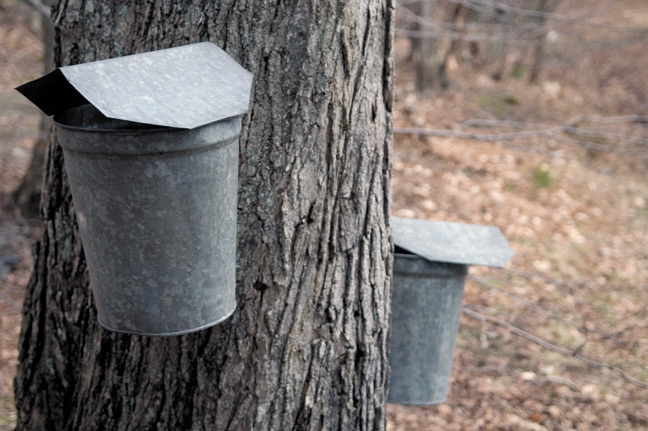UVM Proctor Page
What's trending
Six top-producing states accounted for nearly 3 million increase in taps from 2007-12
By BY TIMOTHY D. PERKINS, M.L. ISSELHARDT AND A.K. VAN DEN BERG |
This second series installment focuses on expansion in the maple industry over the past ten years. We will primarily rely upon the 2012 U.S.D.A. Census of Agriculture (COA) as a basis for our information. In addition, although growth is evident in many maple-producing areas, we will focus primarily on the six top producing states, NH, PA, OH, ME, NY and VT, as these account for over 85% of the syrup made in the U.S.
The number of farms (Figure 1) producing maple syrup increased in all six states by an average of 12.5%, representing a change of 632 additional farms producing maple syrup between 2007 and 2012. NH and PA had the smallest percentage increase in the number of maple-producing farms (8.6 and 8.1% respectively), ME and NY were intermediate (10.5 and 11.2%), while OH and VT had the greatest increase (18.0 and 18.5%). Vermont alone reported an increase of 243 farms producing maple syrup over the 5-year time period involved.
The total number of taps in these states increased between 2007 and 2012 by nearly 3 million. Growth in the number of taps averaged 35.5% in these states, and increased to over 11 million or nearly 36% in the U.S. overall. The majority of the increase in taps occurred in NY (53.8% increase) and VT (57% increase), accounting for an additional 77.4% of the new taps in the six states examined. VT alone added over 1.5 million new taps.
Given the additional farms and taps producing maple syrup, it should not be surprising that production in the U.S. over this 5-yr period increased by 52% to over 4.4 million gallons of syrup. The six states shown produced over 9.7 million gallons of syrup. Production increases in NH averaged only 16.1% in that time period, with all other states increasing production by greater than 50%. Syrup produced in ME increased by 75.5%.
Although the number of taps increased by 35.5% in the six states, maple syrup production increased by 52%. There are a couple of possible reasons for this disconnect. The first to consider is season-to-season variability. Some years are just better than others due to the weather encountered the season progresses. Both years the U.S. Ag Census was conducted are generally recognized as poor maple production seasons throughout the northeast, so at least we have some reassurance that we are not comparing a banner year with a poor year. The other factor that is involved is yield, or the production of sap or syrup per tap. Average yield in 2007 across the six states was 0.18 gallons of syrup per tap, whereas yield in 2012 was 0.20 gallons of syrup per tap. Thus the 2012 season, although poor, still produced an average of 0.02 gallons of syrup per tap more (11.6%) than 2007. In addition, it is quite apparent from these low yields that both 2007 and 2012 were poor years indeed, since many of the taps added were new installations which used the newest vacuum and sanitation technology possible, with the potential to produce considerably more than what was achieved.
In the next segment of this series, we will delve more deeply into recent trends in syrup yield per tap.
Jubne/July 2015































